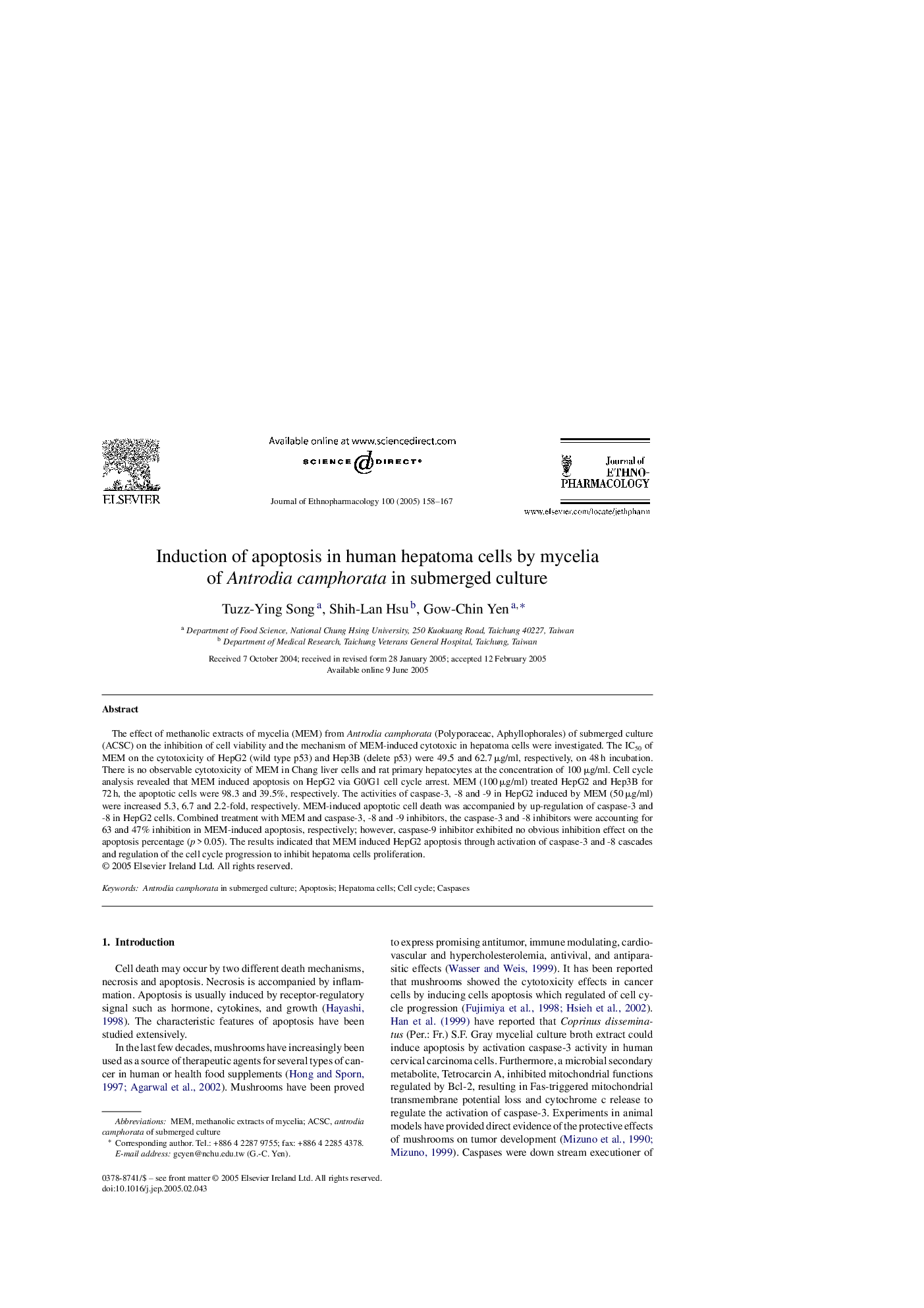| Article ID | Journal | Published Year | Pages | File Type |
|---|---|---|---|---|
| 9010555 | Journal of Ethnopharmacology | 2005 | 10 Pages |
Abstract
The effect of methanolic extracts of mycelia (MEM) from Antrodia camphorata (Polyporaceac, Aphyllophorales) of submerged culture (ACSC) on the inhibition of cell viability and the mechanism of MEM-induced cytotoxic in hepatoma cells were investigated. The IC50 of MEM on the cytotoxicity of HepG2 (wild type p53) and Hep3B (delete p53) were 49.5 and 62.7 μg/ml, respectively, on 48 h incubation. There is no observable cytotoxicity of MEM in Chang liver cells and rat primary hepatocytes at the concentration of 100 μg/ml. Cell cycle analysis revealed that MEM induced apoptosis on HepG2 via G0/G1 cell cycle arrest. MEM (100 μg/ml) treated HepG2 and Hep3B for 72 h, the apoptotic cells were 98.3 and 39.5%, respectively. The activities of caspase-3, -8 and -9 in HepG2 induced by MEM (50 μg/ml) were increased 5.3, 6.7 and 2.2-fold, respectively. MEM-induced apoptotic cell death was accompanied by up-regulation of caspase-3 and -8 in HepG2 cells. Combined treatment with MEM and caspase-3, -8 and -9 inhibitors, the caspase-3 and -8 inhibitors were accounting for 63 and 47% inhibition in MEM-induced apoptosis, respectively; however, caspase-9 inhibitor exhibited no obvious inhibition effect on the apoptosis percentage (p > 0.05). The results indicated that MEM induced HepG2 apoptosis through activation of caspase-3 and -8 cascades and regulation of the cell cycle progression to inhibit hepatoma cells proliferation.
Related Topics
Health Sciences
Pharmacology, Toxicology and Pharmaceutical Science
Pharmacology
Authors
Tuzz-Ying Song, Shih-Lan Hsu, Gow-Chin Yen,
